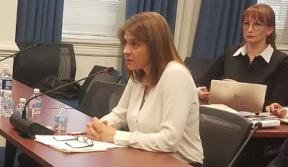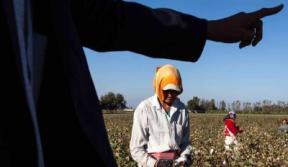On the same day that the Department of Labor went public with their new report, major chocolate and candy companies, who are members of the National Confectioners Association, congregated in Washington D.C in order to push their legislative agenda. Despite that 70% of the world’s cocoa is produced in West Africa, where child labor and slavery are rampant, little has been done by major chocolate corporations to end these abuses. Since 2001 ILRF has urged the chocolate industry to take responsibility for child labor in their chains of production, yet companies continue to purchase and reap profits from child exploitative cocoa. Click here for a “sweet” way to participate in an effort to end the bane of child labor in the cocoa industry this Halloween.
While there have been reported cases of child labor in the cotton industry in Tajikistan, India, Turkmenistan, Benin and Egypt, ILRF directs most of its efforts toward cotton farming in Uzbekistan. The world’s second largest exporter of cotton employs up to one-third of the country’s workforce, including thousands of children as young as seven. Here children toil long hours in the cotton fields and are often forced to apply dangerous pesticides without adequate protective gear. ILRF continues to demand an end to child labor in the cotton industry globally and hopefully the inclusion of cotton as a highlighted item on the DOL product list will bring added attention to this global injustice. Learn more about ILRF’s efforts to bring about an end to child and forced labor in the cotton industry here.
The tobacco industry has a long history of using child labor extensively. While exact figures are hard to come by, as the major cash crop is grown in over 100 countries, child labor is most readily seen in Malawi. In fact, according to the FAFO Institute for Applied Social Science, Malawi has the highest incidence of child labor in southern Africa. Extreme poverty forces child laborers into the tobacco fields, where they are subjected to dangerous manual labor, physical strain, hazardous environments, and long hours. As if smokers needed another reason to quit!
In the wake of the Department of Labor report, ILRF hopes that consumers will have a heightened awareness of abuses that hide behind so many products purchased by US consumers on a daily basis. ILRF Director of Policy and Legal Programs, Brian Campbell says, “This list helps to focus attention on problematic sectors and the challenge now is to implement business practices that lead to higher labor standards and living and working conditions for workers.” To help facilitate this process a consultative group recently established by the Farm Bill will work to develop recommendations for consumers and businesses alike to ensure that products imported and sold in the US are made free of child labor. Fortunately, ILRF’s Executive Director, Bama Athreya, was just selected by the Secretary of Agriculture to be a member of the farm bill consultative group on child and forced labor. Additionally, US labor secretary Hilda Solis announced that the Labor Department, which currently supports 220 anti-child labor projects in 82 countries, will give an added $60 million for programs addressing exploitative child labor. The goals of these programs will be to provide education as well as vocational training for impoverished children and to help their parents find alternatives to child labor.


Comments
re: New DOL Report Lists Products Made Using Child or Forced Lab
What an eye opening report! How can I, with good conscience, walk across the carpets in my little brick house, in my cotton pjs, to make morning coffee or cocoa, ever again, without considering the labour that has gone into making these goods? This report makes one be mindful of every choice one makes, and reminds us to live with care in the world.